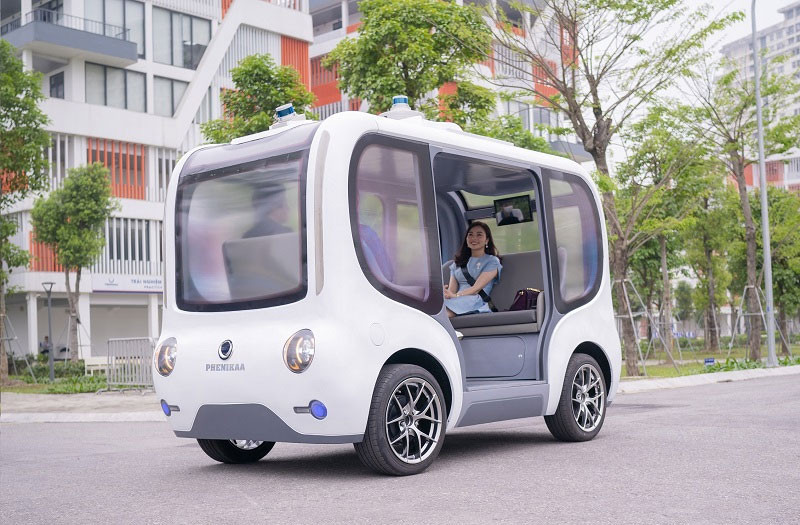
Geleximco Group of businessman Vu Van Tien has announced a plan to build a modern factory manufacturing and assembling electric cars and batteries, using European technology.
Geleximco will make car parts and components to provide to automobile assembly plants and partners for export.
It is expected that in phase 1, from 2024 to 2030, the plant will have a manufacturing output of 50,000 products a year. In phase 2, the capacity would be doubled. Total investment in phase 1 is $300 million and $500 million in phase 2.
Earlier, Geleximco invested in making car parts, including a joint project with Honda to establish an enterprise to manufacture automobile and motorbike parts.
In March 2021, the Phenikaa Group of Ho Xuan Nang (President of Phenikaa University), established the Phenikaa X startup to introduce smart self-propelled vehicle level 4, the first made-in-Vietnam automation guided vehicle (AGV).
Phenikaa’s level-4 (out of a 5-level scale) AGV has many outstanding smart features, using AI and most modern technologies, including 2D/3D map, Lidar sensor, machine learning and deep learning.
The first businessman who started in the electric car manufacturing race was the country's richest man, Pham Nhat Vuong, president of Vingroup.
Within 12 months, starting from September 2017, Vingroup turned the 335ha muddy ground in the Dinh Vu – Cat Hai Economic Zone (EZ) in Hai Phong City into the VinFast automobile and motorbike manufacturing complex, with total investment of $3.5 billion.
The major purpose of VinFast is to become the leading automobile manufacturer in Southeast Asia with a designed capacity automobile complex of 500,000 cars a year and motorbike complex of 1 million products a year by 2025.
In mid-July 2022, VinFast stated that it officially stopped making gasoline-run cars to focus on making electric cars.
Many advantages, but also difficulties
According to CNBC, VinFast aims to provide the first battery-run SUV products to the US market by this year-end. It has recruited 8,000 more workers to accelerate production of electric cars for the market.
VinFast wants to build a plant in North Carolina with a yearly capacity of 150,000 cars. It has begun selling made-in-Vietnam SUV models VF8 and VF9 in North America and Europe.
In Vietnam, VinFast sold thousands of electric cars VF e34 in H1/2022. It has opened many electric bus routes in Hanoi and HCM City, using its own e-buses.
Hanoi and HCM City are switching from gasoline-run buses to electric buses. Hanoi will need VND21 trillion by 2025 to switch 1,100 gasoline-engine buses to electric ones.
Under the national action plan on green energy transformation and carbon and methane reduction, 100 percent of public buses will use electricity and green energy from 2025.
This is a field with great potential, as fossil fuels will get exhausted and petrol prices increase.
The positions of electric car manufacturers such as Tesla, NIO and VinFast have been cemented.
According to the IEA, only 120,000 electric cars were sold globally in 2012. The same figure was reached within one week in 2021. In 2022, 2 million products were sold in Q1, an increase of 75 percent year on year.
Americans, in a recent survey by J.D Power, showed less satisfaction about gasoline cars as fuel prices are escalating. The warming up of the US electric car market is a great opportunity for electric car manufacturing, including Vinfast.
In Vietnam, manufacturing electric cars is just at the beginning. According to the Ministry of Finance (MOF), the industry requires long-term investment strategy, huge capital, infrastructure, and policy on battery development and related resources.
Therefore, regarding VAMI’s (Vietnam Association of Mechanical Industry) proposal for MFN exemption for electric car imports for two years, the ministry said it would not consider this in the immediate future.
Manh Ha